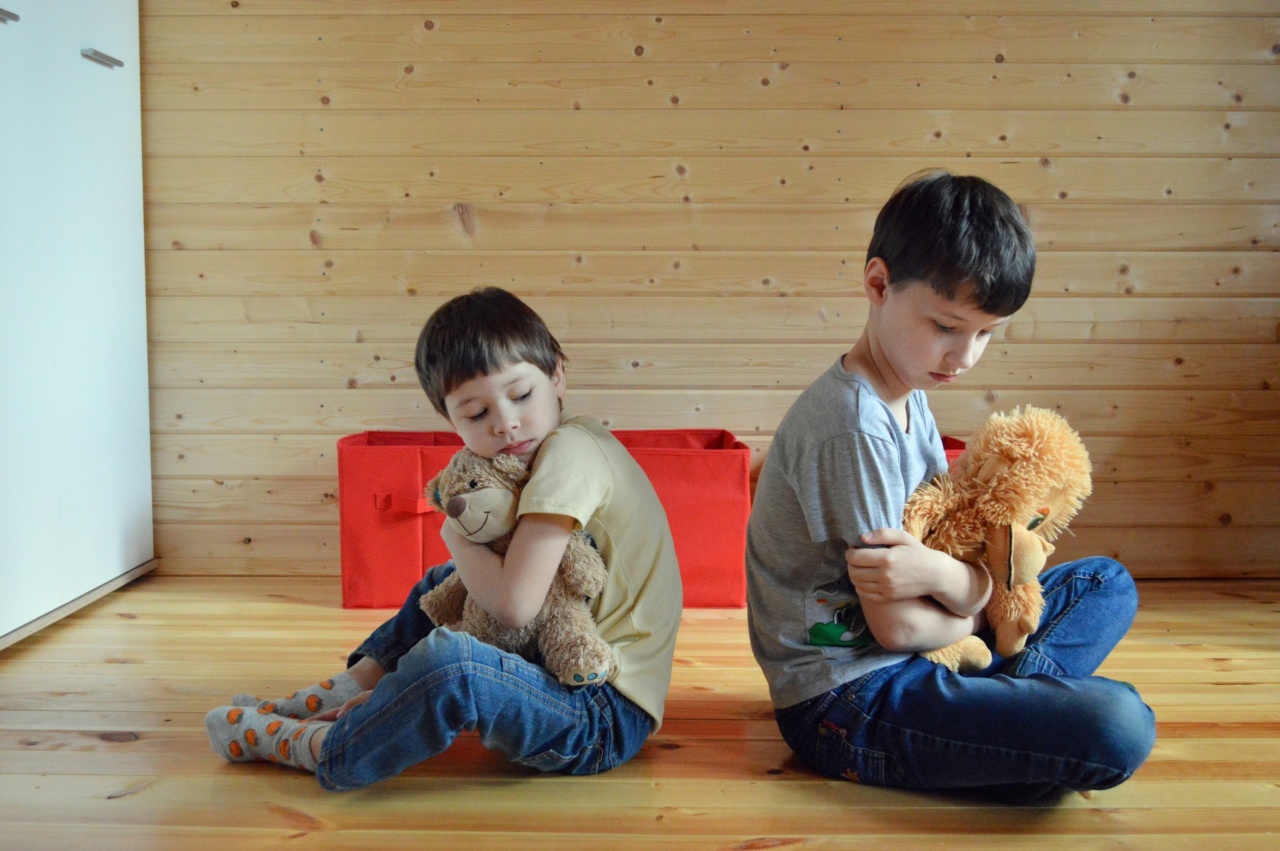As parents, we strive to create a nurturing and stimulating environment for our children. We carefully choose their toys, books, and even the clothes they wear.
But did you know that the color of your child’s room can also have a significant impact on their mood and behavior? In this article, we will explore how room color can affect your child’s emotional well-being and offer some tips on choosing the right hues.
The Power of Colors
Colors have been proven to evoke various emotions and psychological reactions. Different shades can either calm or energize, promote focus or creativity, and even affect appetite and sleep patterns.
Understanding these influences can help us create an optimized room environment for our little ones.
Calming Colors for Tranquility
When it comes to promoting a peaceful and serene atmosphere, certain hues are known for their calming effects:.
1. Blue
Blue is often associated with tranquility and has been shown to lower blood pressure and heart rate. This soothing color is perfect for creating a serene oasis in your child’s room.
Light shades of blue, such as sky blue or baby blue, can evoke a sense of calmness and relaxation.
2. Green
Green is another color that promotes tranquility and has a soothing effect on the mind and body. Similar to blue, green has been shown to reduce stress levels and enhance feelings of relaxation.
Using shades of green, such as sage or mint green, can create a harmonious and peaceful environment.
3. Lavender
Lavender is known for its calming properties and is often associated with relaxation and sleep. This delicate hue can create a tranquil space that promotes a sense of peace and well-being.
Applying lavender accents or using light lavender as the primary color can be beneficial for your child’s room.
Energizing Colors for Focus and Creativity
If you want to stimulate your child’s creativity and encourage focus, consider incorporating the following energizing colors:.
1. Yellow
Yellow is associated with optimism and vitality. This vibrant color can enhance concentration and help stimulate the mind. However, it’s important to note that excessive yellow can also lead to feelings of frustration or anger.
Using softer shades of yellow, like pale butter or lemon, can promote a positive and energizing environment.
2. Orange
Orange is a warm and vibrant color that stimulates the brain and encourages creativity. This color is known to enhance cognitive function and boost energy levels. However, similar to yellow, too much orange can be overwhelming.
Opt for softer shades like peach or coral for a balanced and invigorating room environment.
3. Red
Red is a highly energetic color that can promote excitement and enthusiasm. It is known to increase heart rate and blood pressure, making it ideal for spaces where physical activity and socialization take place.
However, it’s important to use red as an accent color rather than the dominant hue, as excessive red can lead to feelings of agitation.
Colors for Better Sleep and Relaxation
A good night’s sleep is crucial for your child’s physical and emotional well-being. Choosing the right colors for their bedroom can contribute to a more restful atmosphere:.
1. Soft Neutrals
Incorporating soft neutrals, such as beige or light gray, can create a calming and cozy atmosphere. These colors are incredibly versatile and can easily be paired with other shades to evoke a sense of relaxation and comfort.
2. Pastel Pink
Soft pastel pink has a soothing and nurturing effect on both children and adults. It promotes feelings of comfort and tranquility, making it an excellent choice for your child’s bedroom.
However, it’s essential to balance pink accents with other complementary colors to avoid creating an overly feminine atmosphere.
3. Earthy Tones
Blending earthy tones, such as warm browns or subtle greens, can create a grounding and cozy space. These colors have a calming effect and help promote a sense of stability and relaxation.
Choosing the Right Color Scheme for Your Child’s Room
Now that we understand the psychological effects of different colors, it’s important to choose a color scheme that aligns with your child’s needs and personality:.
1. Consider Your Child’s Preferences
Start by involving your child in the decision-making process. Ask them about their favorite colors and how they want their room to feel. This will ensure they have a personal connection to their space and feel comfortable in it.
2. Create a Balanced Palette
While your child’s preferences are important, it’s still crucial to create a balanced color palette. Incorporate a mix of calming, energizing, and sleep-promoting colors to cater to different activities and moods.
3. Opt for Tranquil Walls
Consider using calming colors, such as blue, green, or lavender, for the walls. These shades will set the overall tone of the room and provide a sense of tranquility.
4. Accent with Vibrant Colors
Use energizing colors, such as yellow or orange, as accents in furniture, artwork, or accessories. This will introduce pops of color and stimulate creativity without overwhelming the room.
5. Incorporate Texture and Patterns
Don’t limit yourself to solid colors. Utilize textured wallpapers or patterned fabrics to add depth and visual interest to the room.
Just ensure that the patterns and textures complement the overall color palette and don’t create visual clutter.
Conclusion
The color of your child’s room can significantly impact their mood, behavior, and overall well-being.
By understanding the psychological effects of different colors, we can create a nurturing and stimulating space that promotes emotional balance, focus, and restfulness. Remember to involve your child in the decision-making process and choose a balanced color palette that caters to their needs and preferences. By doing so, you can create a harmonious environment where your child can thrive and flourish.






























